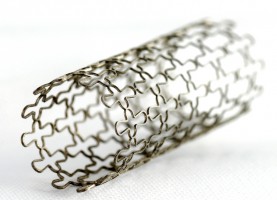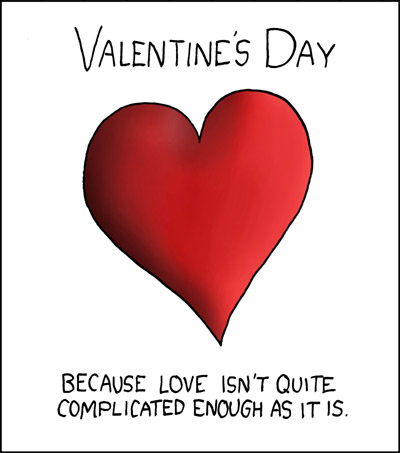On Monday and Tuesday last, Trinity College @tcddublin hosted EISRI 2013: European Intersectoral Summit on Research and Innovation #sciencemedia #EISRI. The theme of the summit was the role of media (and new media) in responsible research and innovation with discussions on important topics to the science community and the general public, including research ethics, open access and the role of science journalism. One of the stand-out talks of the day was by Alexander Gerber @InnoKomm, an information scientist and the Managing Director of Innocomm Research, which is a Berlin-based research centre for science and innovation communication.
The theme of the summit was the role of media (and new media) in responsible research and innovation with discussions on important topics to the science community and the general public, including research ethics, open access and the role of science journalism. One of the stand-out talks of the day was by Alexander Gerber @InnoKomm, an information scientist and the Managing Director of Innocomm Research, which is a Berlin-based research centre for science and innovation communication.
Spectacular video of coronal rain released by NASA

Last week, NASA released a video recorded on July 19th 2012 which features an amazing display of what’s known as coronal rain which occurs in conjunction with a solar flare and coronal mass ejection. This process began when a massive solar flare burst from an area of magnetic activity. This was followed by a coronal mass ejection which is a violent burst of plasma and charged particles that is so powerful that it even affects the earth’s magnetosphere, causing phenomena such as the Northern and Southern lights.
A Unitary Patent System for Europe
Representing one of the final major steps towards the establishment of a unitary patent system for Europe, the Unified Patent Court Agreement was signed by the majority of EU Member States in Brussels last week (19 February 2013).
What is the Unified Patent Court Agreement?
This Agreement constitutes a package which also includes two EU Regulations: unitary patent protection; and, associated translation arrangements (adopted in December 2012). The package provides the legal basis for the future European Unitary Patent system – a system that has been a hot topic of discussion at European level for over thirty years.
The Unified Patent
 Current practice requires that for a business or individual to confer legal protection to their intellectual property, an application for patent protection must be submitted centrally, through the European Patent Office (EPO) in Munich. Once granted, the patent must be validated in each state in which protection is sought, a process that can involve significant costs due to translation and local validation fees.
Current practice requires that for a business or individual to confer legal protection to their intellectual property, an application for patent protection must be submitted centrally, through the European Patent Office (EPO) in Munich. Once granted, the patent must be validated in each state in which protection is sought, a process that can involve significant costs due to translation and local validation fees.
Round up of Life Science News – Feb 2013
Irish Biopharma Amarin kicks off sales in the US
Vascepa, a drug developed by Irish biopharma group Amarin, which gained FDA approval last July for the treatment dangerously high cholesterol, has gone on sale in the United States. Vascepa, essentially a purified omega-3 fish oil, marks a vindication for the company which came close to collapse at one point in the drug’s development. Vascepa reduces high triglyceride levels in the blood without causing elevations of LDL-C, the so-called “bad cholesterol.” GlaxoSmithKline’s competing fish-oil pill Lovaza also lowers triglycerides but at the expense of rising bad cholesterol. Amarin management has cautioned investors not to expect Vascepa to rocket out of the starting gate but the company is expecting significant success with the drug. By 2014, Amarin may have more of an advantage over GSK if FDA approves an expanded indication for Vascepa allowing the drug to be marketed for patients with high (as opposed to very high) triglyceride levels. Significant use in this larger patient population may not really ramp, however, until Amarin can prove that the combination of Vascepa and a statin reduces the incidence and risk of cardiovascular disease. An on-going study designed to demonstrate this benefit isn’t expected to be completed until 2016.
Abbott Vascular announced 200 Redundancies
Last week, medical devices firm Abbott Vascular in Clonmel announced that it is seeking 200 voluntary redundancies from its permanent workforce. Abbott’s vascular facility in Clonmel currently employs more than 1,400 people and manufactures drug eluting stents for the global market.
Happy Birthday Copernicus
 Today’s Google doodle is dedicated to the 540th birthday of Nicolaus Copernicus – the man famous for the heliocentric model of our universe ie the model that puts the sun at the centre. Up until this model it was believed that it was the Planet Earth, in fact, which was at the centre. We now know that the Sun is the centre, not of the universe, but of our own solar system. However this revolutionary idea was a massive advance over previous theories and sowed the seeds for the scientific revolution which was to follow. One of the great polymaths of the Renaissance, Copernicus was a mathematician, astronomer, jurist with a doctorate in law, physician, quadrilingual polyglot, classics scholar, translator, artist, Catholic priest, governor, diplomat and economist. Feel free to check out the doodle at google.com (expired) and wish this Polish genius “wszystkiego najwspanialszego.” (that’s Polish for “happy birthday.”)
Today’s Google doodle is dedicated to the 540th birthday of Nicolaus Copernicus – the man famous for the heliocentric model of our universe ie the model that puts the sun at the centre. Up until this model it was believed that it was the Planet Earth, in fact, which was at the centre. We now know that the Sun is the centre, not of the universe, but of our own solar system. However this revolutionary idea was a massive advance over previous theories and sowed the seeds for the scientific revolution which was to follow. One of the great polymaths of the Renaissance, Copernicus was a mathematician, astronomer, jurist with a doctorate in law, physician, quadrilingual polyglot, classics scholar, translator, artist, Catholic priest, governor, diplomat and economist. Feel free to check out the doodle at google.com (expired) and wish this Polish genius “wszystkiego najwspanialszego.” (that’s Polish for “happy birthday.”)
The Science of the Valentines Day
 For those in the throes of mutual loving devotion, Valentines Day is the time of year for which no amount of flowers, e-cards, teddies and other mass-produced tokens of sincerity is enough. It is the annual perfect storm formed when fronts of love, guilt and seaside tat converge in a high pressure atmosphere of dopamine, serotonin and oxytocin all presided over by by the benevolent Love Gods of Hallmark – the supposed corporate progenitors of this ‘fabricated’ holiday. (Not entirely true, St. Valentine’s day has been celebrated as a veneration of courtly love since the 14th century. St. Valentine is also, quite interestingly from a life sciences point of view, the patron saint of Epilepsy.)
For those in the throes of mutual loving devotion, Valentines Day is the time of year for which no amount of flowers, e-cards, teddies and other mass-produced tokens of sincerity is enough. It is the annual perfect storm formed when fronts of love, guilt and seaside tat converge in a high pressure atmosphere of dopamine, serotonin and oxytocin all presided over by by the benevolent Love Gods of Hallmark – the supposed corporate progenitors of this ‘fabricated’ holiday. (Not entirely true, St. Valentine’s day has been celebrated as a veneration of courtly love since the 14th century. St. Valentine is also, quite interestingly from a life sciences point of view, the patron saint of Epilepsy.)
Its well documented that love can be reduced to the aforementioned constituent chemical parts not to mention evolutionary reward systems, but it’s difficult to appreciate this when you’re sitting eagerly awaiting your first date with a certain some one or into your third hour of a ” you hang up, no you hang up” scenario or drunkenly spray-painting “I’m in like with you” on the drive way of their parent’s semi-D.
Parallel Worlds, Parallel Lives.
 “How much do we know about the people we rub shoulders with every day?” is the question at the heart of this BAFTA-winning documentary first broadcast in 2007. The parallel lives in question are those of Mark ‘E’ Everett – the front-man of the band Eels – and his father, Hugh – a theoretical physicist famed for his many worlds interpretation of parallel universes.
“How much do we know about the people we rub shoulders with every day?” is the question at the heart of this BAFTA-winning documentary first broadcast in 2007. The parallel lives in question are those of Mark ‘E’ Everett – the front-man of the band Eels – and his father, Hugh – a theoretical physicist famed for his many worlds interpretation of parallel universes.
We follow Mark as he chats to former colleagues and students of his father – a genius who abandoned academia in favour of the defense industry when it became apparent that the science world wasn’t ready for his theory. Mark knew nothing of the waves his father had made even up until his death of a heart attack in 1982.
“My father never, ever said anything to me about his theories. I was in the same house with him for at least 18 years but he was a total stranger to me. He was in his own parallel universe. He was a physical presence, like the furniture, sitting there jotting down crazy notations at the dining room table night after night. I think he was deeply disappointed that he knew he was a genius but the rest of the world didn’t know it,” – Mark Oliver Everett.
How Small Businesses can Optimise Digital Marketing – A Recent Seminar Hosted by NovaUCD

NovaUCD courtesy of ucd.ie
Last Thursday saw the opening of NovaUCD’s doors for a seminar entitled How Small Businesses can Optimise Digital Marketing. NovaUCD is UCD Belfield’s Innovation and research centre dedicated to inspiring creative graduates, putting knowledge to work and growing and supporting new business in Ireland. This seminar was organised by the NovaUCD Client Social Media Working Group. This group is comprised of members of the various start-ups at the institute and they meet monthly to share social media strategies and experiences. The seminar was moderated by Nicole Nelson @NNelsonic who holds BA degrees in both Anthropology and Linguistics.
DCU announces 200 Cleantech jobs
Minister for Jobs, Enterprise and Innovation, Richard Bruton TD has officially launched a new national centre for innovation in the Cleantech sector at DCU Innovation Campus.
 The initiative was established on a site previously owned by Enterprise Ireland to DCU for the specific purpose of this project and will be the location of choice for Cleantech start-ups, SMEs and larger companies. Cleantech – a fast-growing area of international commerce is worth 5 trillion annually and provides insight to Fortune 1000 corporations regarding environmental challenges – wind, water and waste management to name just a few. This insight helps to make better decisions that foster growth, reduce cost and meet consumer and government demands for improved environmental quality.
The initiative was established on a site previously owned by Enterprise Ireland to DCU for the specific purpose of this project and will be the location of choice for Cleantech start-ups, SMEs and larger companies. Cleantech – a fast-growing area of international commerce is worth 5 trillion annually and provides insight to Fortune 1000 corporations regarding environmental challenges – wind, water and waste management to name just a few. This insight helps to make better decisions that foster growth, reduce cost and meet consumer and government demands for improved environmental quality.

 Social media has had a rapid and successful adoption by companies in a number of sectors including telecoms, travel, entertainment, and not stating the obvious, IT and marketing. Its uses span rapid and real time customer service, competitive intelligence to enhance the consumer’s experience and brand awareness and activation. However, many business leaders wonder where the value lies in its use in the pharmaceutical, healthcare or similar scientifically based companies. A lot of people view it as frivolous and potentially damaging to their company’s reputation to be involved in such ‘social practices’. Furthermore, many fear the risks that may ensue from the open and uncontrolled communication between patient, healthcare provider and manufacturer which the platform could facilitate. In a highly regulated and controlled environment, which many pharmaceutical and life science companies operate in, such unregulated activities may seem terrifying.
Social media has had a rapid and successful adoption by companies in a number of sectors including telecoms, travel, entertainment, and not stating the obvious, IT and marketing. Its uses span rapid and real time customer service, competitive intelligence to enhance the consumer’s experience and brand awareness and activation. However, many business leaders wonder where the value lies in its use in the pharmaceutical, healthcare or similar scientifically based companies. A lot of people view it as frivolous and potentially damaging to their company’s reputation to be involved in such ‘social practices’. Furthermore, many fear the risks that may ensue from the open and uncontrolled communication between patient, healthcare provider and manufacturer which the platform could facilitate. In a highly regulated and controlled environment, which many pharmaceutical and life science companies operate in, such unregulated activities may seem terrifying.